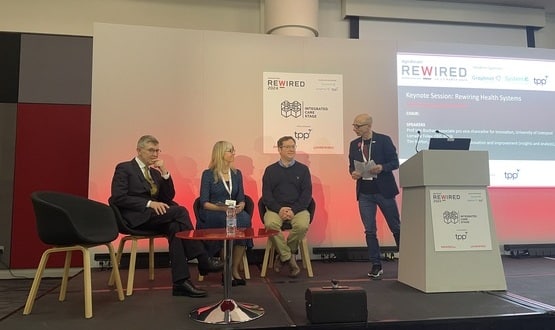RIS replacements: hard to do, easy to get wrong
- 27 August 2013

Earlier this summer, reports that patients in Kent and Medway were experiencing delays in getting scan appointments and results hit the headlines.
The delays were blamed by hospital trusts on a new radiology information system from GE Healthcare, implemented in June.
Annette Schreiner, the medical director of Dartford and Gravesham NHS Trust, which was one of four in a consortium formed to buy a new picture archiving and communication system and RIS ahead of the end of their National PACS Programme contract, told EHI the RIS element had not gone well.
“A planned downtime of three days extended to 17 days. During that time, the department had to resort to paper-based systems” she said, adding that it had proved difficult to catch up because the system was slow.
After several weeks, GE had not resolved the problems. When EHI contacted the company for this feature, a spokesman said that the company wasn’t ready to discuss the Kent issues in detail. However, he added it was working “very closely” with the trusts to resolve them.
A last-minute pile through the door
Implementing a new RIS is not easy. Indeed, when analysts from EHI’s research arm, EHI Intelligence, interviewed IT mangers and clinicians for its annual report on PACS/RIS, a number emphasised that a RIS is such a complex, business critical system that upgrades and replacements should be approached with great care.
Yet, for several months, trusts across England have been racing against the clock to implement new PACS and RIS, before contracts negotiated under NPfIT expired on 30 June.
When the Health and Social Care Information Centre announced in early July that all the trusts that needed to exit their contracts by that date had done so, it sounded like an NHS success story worth celebrating.
Yet it has become clear that not all of the implementations have gone smoothly. The National PACS Programme was set up a decade ago to get PACS and RIS to trusts that needed them.
Like the rest of the national programme, it split the country into areas and appointed a local service provider to contract with software suppliers for these systems.
Under the NPfIT arrangements, HSS supplied the RIS used by trusts outside London, and this was managed by one of two local service providers: CSC and Accenture.
Most trusts have opted to stay with HSS, but some, including those in the Kent and Medway consortium, opted to switch.
Chris Bull, a healthcare informatics professional and director of Purple Fish consultancy, says that problems with RIS often have a greater impact than problems with other systems, such as PACS.
“RIS is really the driver behind patient workflow and patient care. So when you walk through a patient through a trust, everything subsists around how you manage that patient and, of course, everything is managed around the RIS system.”
The challenges of implementing a new RIS have been exacerbated by the requirement for many English trusts to move to a new system at the same time. This seems to have stretched thin expertise among the LSPs and their suppliers.
Trusts were unable to avoid the rush by making the changeover ahead of deadline, because there were penalties for leaving existing contracts early.
Malcolm Senior, IT director at Taunton and Somerset NHS Trust, says: “The national contract is structured in such a way it all seems to be a last minute pile through the door… Because everybody is doing it, the capacity of the supply side is diminished.”
Migrating data isn’t easy
Bull says that there are three inter-related areas that are often handled badly in RIS implementations: data migration, integration and workflow management.
Stuart Bain, chief executive of East Kent Hospitals University NHS Foundation Trust, which was another member of the Kent and Medway consortium, has said that problems with data migration are partially responsible for causing the backlog in patient scan results.
Migrating data from one software system to another is a perennial problem, but vendors and trusts often underestimate the scale of the challenge. “Slight differences in data format and storage can become large barriers to an easy migration,” says Neil Twist, HSS development manager.
The Cheshire and Merseyside consortium, which consisted of 11 trusts, minimised some of the potential problems by migrating from an HSS RIS to another HSS RIS.
Even so, it found the task was harder than anticipated, because discrepancies that hadn’t come up in testing had to be resolved over the migration weekend.
Sometimes the problem is on the vendor side. “A lot of RIS vendors are unable to put their data into a format that allows you to do easy migration from A to B,” says Bull.
But there can also be a problem in the way that trusts organise patient data. There is a risk, when migrating, of misidentifying patients with similar names, or failing to recognise that a patient listed under two different names is the same person.
Bull says that to minimise the risk of misidentification, every trust should have a master patient index that includes each patient’s NHS Number.
Some trusts, for example, draw patient data from the Personal Demographics Service, a national electronic database holding patient details, including the NHS Number.
When Taunton and Somerset NHS Trust and Yeovil District Hospital NHS Trust joined forces to implement a Carestream RIS, they both had to migrate from existing (but separate) HSS RIS systems.
Senior says that problems were caused by the fact that the Carestream RIS and the HSS RIS handled the unique patient identifier differently.
Further difficulties were caused by the need to bring the two MPIs together, he says. “Both MPIs were fed through our patient administration systems.
“In Taunton, we have a Spine-compliant Cerner Millennium PAS, which is fed from the Personal Demographics Service, and always had the latest NHS Number.
“Yeovil have a PAS but it isn’t Spine-compliant, and it doesn’t take a feed from the PDS. It had a number of duplicates.” Merging the two together proved harder than the trust and companies hoped.
Getting integration right, dealing with workflow
Data migration is tied up with another issue: integration with other systems, such as a trust’s patient administration system, as well as its PACS.
Bull says that many trusts fail to do their background research on vendors. “We still see many vendor systems using proprietary formats that do not enable easy communication of information. This can make integration difficult.”
Trusts need to be confident that a RIS will allow them to cross-track patient information from one site to another when expert opinion is required or a patient is moved for specialist treatment.
They should always, says Bull, ask for test scripts from the supplier to make sure that systems can cross-talk.
A lack of integration causes serious problems for both staff and patients, says Twist. “Improper or no integration with trust systems can cause a huge workload for radiology staff and also introduces risks of human error, such as mistyping patient information.”
The third challenge for trusts and vendors is getting the workflow right. “The real key with radiology is moving through the patient experience from start to finish,” says Bull.
It’s important to choose a RIS vendor who understands the workflow arrangements in radiology departments and can configure their product accordingly. “A lot of RIS systems can’t support particular ways of working,” he says.
Planning ahead
Some of the problems that have been seen in the first wave of post National PACS Programme changes might be averted by better planning.
Procuring trusts should involve clinicians in the procurement process, and make sure that they are clear and precise about their requirements.
Rather than take what vendors say on trust, they should ask for test scripts to make sure that data can flow between different systems.
Choosing the same vendor to deliver a PACS and RIS, rather than opting for a best-of-breed vendor for each, can be a mistake, says Bull: “With a RIS system, you should go with a vendor that knows how to deliver patient information.”




